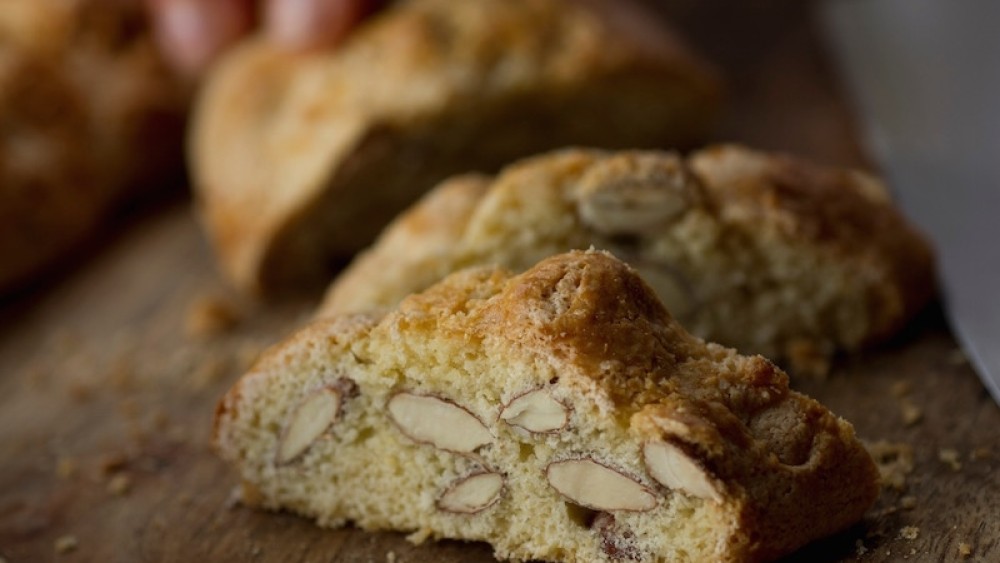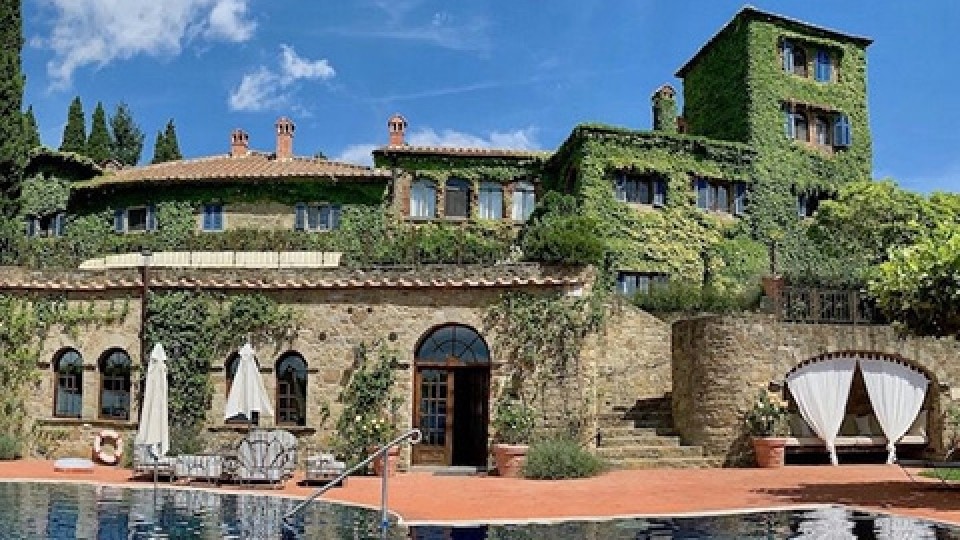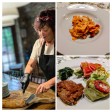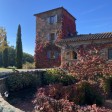Cantucci and Vin Santo- a heavenly combination which is made at Tuscookany and savored after dinner.
June 23, 2015

Photo by Tuscookany cookbook "The flavours of Tuscany" page 206
Cantucci and Vin Santo- a heavenly combination which is made at Tuscookany and savored after dinner.
The delicious Cantucci are fragrant little treats made of flour, eggs, pine nuts and almonds. They are the kings of the Italian biscotti, the representation par excellence of our love for the sweet, crunchy notes that make life worth living. Some people believe the “original” recipe of the modern Cantucci was conceived in the charming city of Prato. What we know for sure it that they are the product of ancient Tuscan traditions. Like it often happens in the Italian peninsula, where the most famous dishes come from the kitchen of the poor villagers, every recipe handed down from generation to generation has its own little variation: a personal touch, a secret ingredient, a pinch of something special grandma added because she loved it too much. That’s why some people make Cantucci with acacia honey while others choose orange blossom honey, and there are families who believe you just can’t make the real Tuscan Cantucci without sugar. My grandma always used butter and I adored her Cantucci and their soft heart, but I know many families who like them dry and rustic, and even use whole, unpeeled almonds to underline the rough texture, the perfect companion for the sweetness of the classic Vin Santo. At Tuscookany, all our chefs have their own special Cantucci recipe, and they are all delicious.
Talking about Vin Santo (literally, Holy Wine), this sweet ambrosia has an equally long story behind its sweet notes. According to an ancient legend, during the year when the Black Death invaded Italy (in 1348) a Dominican friar distributed a beverage to the victims of the terrible plague, a wine, precisely, telling them it was a miraculous drink, a holy liquid. Maybe, however, the name of this mystical wine comes for the season when the grapes were traditionally collected and the wine bottled, November, which is the month of the Saints. Whatever the truth is, the Vin Santo is velvety like a liquor, inebriating, with a lingering nutty aroma. At the end of the meal, dipping homemade Cantucci, which are crunchy and rich in nutty notes – thanks to the almonds, in a glass of classic Vin Santo it’s a celebration of a perfect contrast that creates a unique, unmistakable harmony.
This wine is great also with Italian cheese and salty recipes, which is surprisingly another element that brings Vin Santo and Cantucci together. The famous Tuscan treats, in fact, used to be cut from bread and toasted, and they were basically salty. Almonds became part of the recipe later and in the eighteenth century honey arrived, which finally turned them into a charming dessert that was both simple and refreshing. Sugar and honey functioned also as preservatives, a quality that allowed the Tuscan villagers to package and share their invention. That’s how the Cantucci entered the taverns, where travellers coming from all over Europe met their crunchiness and fell in love with them.
The Cantucci are little cookies, but it is important to underline the erroneous use of the word “biscotti”, which in the United States (and in each and every Starbucks on Earth) is used to label the classic Tuscan dessert. The word biscotto comes from the Latin panis biscotus, which means bread that was cooked twice. Historically, in fact, just like it happened with the Cantucci, many bread-based recipes used to be toasted, which made them crunchy and more durable. Then, the name began to be used to indicate little dry desserts made with sugar, honey, flour and other ingredients. However, in Italy the term biscotti doesn’t indicate a single recipe, but it is an almost perfect translation of the American cookie. This said, the fact that our Cantucci have been somehow mistaken for the representation of an entire category, the Italian biscotti, is a clear sign of their deliciousness!
The Cantucci are irresistible. In fact, Franco (the chef of the Tuscookany Italian cookery course at Torre del Tartufo) always knows where the owners have been: he just has to follow the empty cookie jars! The Vin Santo/Cantucci combination, however, carries with it also an anecdote and an important lesson. Like the count Ugo Contini Bonacossi used to say, the sweet binomial reminds us to respect the table where we sit to enjoy our dinner and lunch. Those who are unable to slow down, meditate, and taste their food, the Italian way to have a nice meal, will end up greedily dipping the Cantucci in the wine. In doing so, they will ruin the holy beverage with crumbles and pieces of almonds. As any proud Tuscan can confirm, this is a sacrilegious crime that forces the guest to drink Vin Santo soiled with pieces of cookie. If you respect both wine and cookies, however, you learn to cultivate your patience, slow down, touch the wine quickly with the Cantucci, wait enough time to let the cookie absorb the liquid and then enjoy the triumph of taste. This is how a masterpiece should be enjoyed: slowly and carefully.
Please leave a comment about Cantucci and Vin Santo down below !

Interested in our cooking courses at one of our Tuscan villas?
Do you want to enjoy our Tuscany cooking classes with plenty of time to explore in your free time, all while staying in an amazing villa?
Reviews
How our guests experienced the Tuscookany courses
Reviews from our former guests made about their visit to Tuscookany on TripAdvisor, facebook, Twitter, Google, Chow and Yelp.





